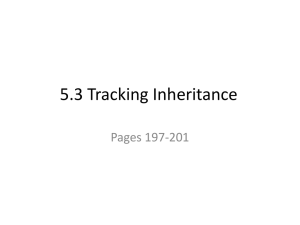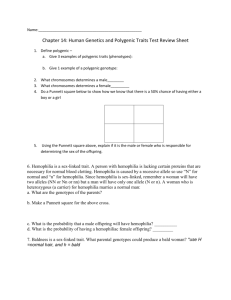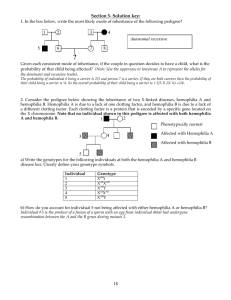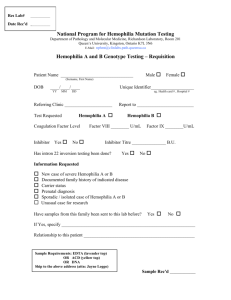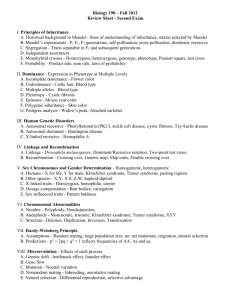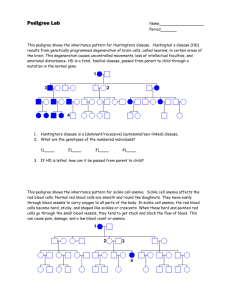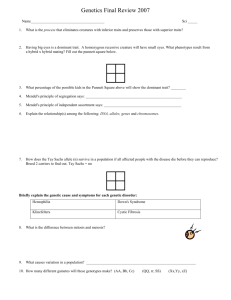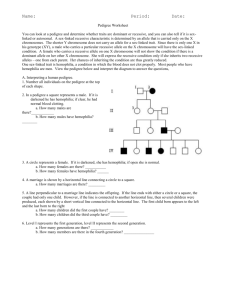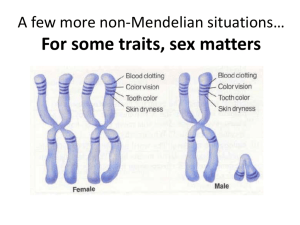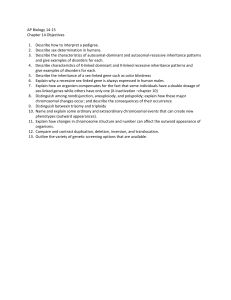Document 13541293
advertisement
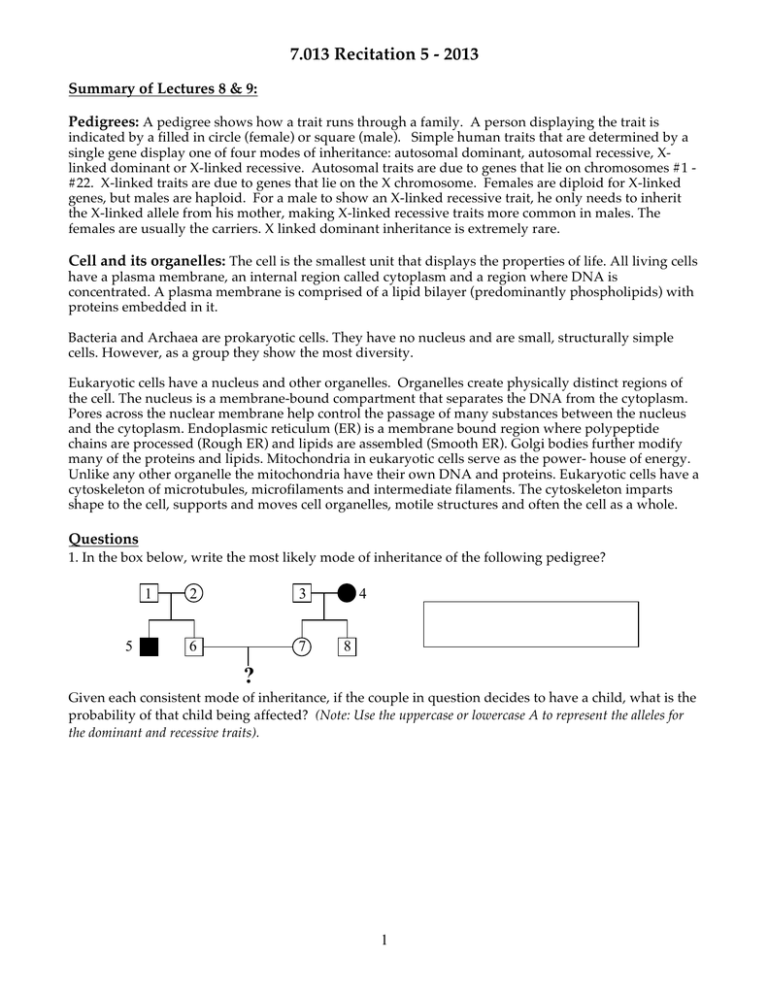
7.013 Recitation 5 - 2013 Summary of Lectures 8 & 9: Pedigrees: A pedigree shows how a trait runs through a family. A person displaying the trait is indicated by a filled in circle (female) or square (male). Simple human traits that are determined by a single gene display one of four modes of inheritance: autosomal dominant, autosomal recessive, Xlinked dominant or X-linked recessive. Autosomal traits are due to genes that lie on chromosomes #1 #22. X-linked traits are due to genes that lie on the X chromosome. Females are diploid for X-linked genes, but males are haploid. For a male to show an X-linked recessive trait, he only needs to inherit the X-linked allele from his mother, making X-linked recessive traits more common in males. The females are usually the carriers. X linked dominant inheritance is extremely rare. Cell and its organelles: The cell is the smallest unit that displays the properties of life. All living cells have a plasma membrane, an internal region called cytoplasm and a region where DNA is concentrated. A plasma membrane is comprised of a lipid bilayer (predominantly phospholipids) with proteins embedded in it. Bacteria and Archaea are prokaryotic cells. They have no nucleus and are small, structurally simple cells. However, as a group they show the most diversity. Eukaryotic cells have a nucleus and other organelles. Organelles create physically distinct regions of the cell. The nucleus is a membrane-bound compartment that separates the DNA from the cytoplasm. Pores across the nuclear membrane help control the passage of many substances between the nucleus and the cytoplasm. Endoplasmic reticulum (ER) is a membrane bound region where polypeptide chains are processed (Rough ER) and lipids are assembled (Smooth ER). Golgi bodies further modify many of the proteins and lipids. Mitochondria in eukaryotic cells serve as the power- house of energy. Unlike any other organelle the mitochondria have their own DNA and proteins. Eukaryotic cells have a cytoskeleton of microtubules, microfilaments and intermediate filaments. The cytoskeleton imparts shape to the cell, supports and moves cell organelles, motile structures and often the cell as a whole. Questions 1. In the box below, write the most likely mode of inheritance of the following pedigree? 1 5 2 3 6 7 4 8 ? Given each consistent mode of inheritance, if the couple in question decides to have a child, what is the probability of that child being affected? (Note: Use the uppercase or lowercase A to represent the alleles for the dominant and recessive traits). 1 2. Consider the pedigree below showing the inheritance of two X-linked diseases, hemophilia A and hemophilia B. Hemophilia A is due to a lack of one clotting factor, and hemophilia B is due to a lack of a different clotting factor. Each clotting factor is a protein that is encoded by a specific gene located on the X chromosome. Note that no individual shown in this pedigree is affected with both hemophilia A and hemophila B. 2 1 Phenotypically normal 3 Affected with Hemophilia A 4 Affected with hemophilia B 5 a) Write the genotypes for the following individuals at both the hemophilia A and hemophilia B disease loci. Clearly define your genotype symbols. Individual 1 2 3 4 5 Genotype b) How do you account for individual 5 not being affected with either hemophilia A or hemophilia B? 2 MIT OpenCourseWare http://ocw.mit.edu 7.013 Introductory Biology Spring 2013 For information about citing these materials or our Terms of Use, visit: http://ocw.mit.edu/terms.
